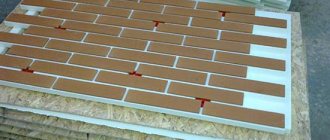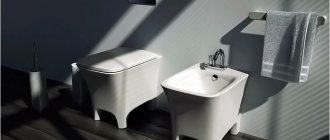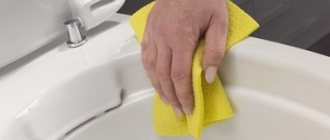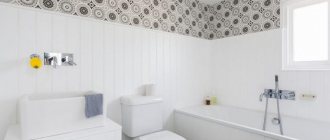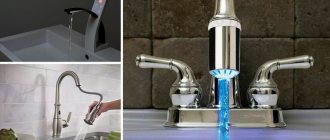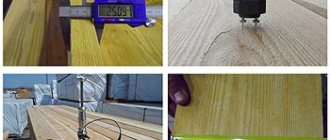We reviewed the best installations sold on the Russian market. We selected the best and most reliable models from them, and compiled a rating for 2021 from them. The TOP was compiled according to the opinion of experts and customer reviews. The installation is a steel structure that fixes the wall-mounted toilet at a height from the floor. It is a strong frame capable of holding the water tank, bowl and the person sitting on it. When the renovation is completed, this gives the bathroom an aesthetic appearance. The flush tank and supply elements are hidden in the wall, leaving only the toilet visible to the eye. Which installation to choose to solve the problem of bathroom renovation? Products differ in type of installation and design.
What is a toilet installation
From some luxury in plumbing, designers returned to asceticism and simplicity. An installation is a special supporting structure that supports the weight of the toilet, flush cistern and related fittings. Due to the fact that a gap is formed between the plumbing fixture and the floor of the room, it seems to “hang” in the air, giving the impression of a light, elegant structure. And all the wiring and the tank are hidden, not conspicuous behind the false panel.
Like any innovation, the wall-hung toilet immediately divided users into ardent fans and opponents. Standard models also have every right to exist, because they:
- securely fixed to the floor
- fully fulfill their main function - satisfying natural human needs
A toilet with installation will definitely require the construction of a special partition - otherwise all pipes and connections will be visible. But this solution looks much more attractive than the traditional one. The secret lies in visual perception: in conventional plumbing fixtures, the tank looks like a natural extension of the bowl, increasing it in size (which is actually not the case). The hanging option leaves only the device itself visible. In addition, it is easier to fit into any interior - that’s what a toilet installation is.
The button for draining water is often made combined: for completely emptying the flush tank and for an economical one, only half emptying. A large control panel embedded in the partition will be an excellent solution for a separate or combined bathroom. And the water supply and sewer riser are located on the other side - no need to worry about special boxes or casings to hide them from prying eyes.
Another important advantage is that the floor pattern can be made mosaic, uniform over the entire area. And cleaning adjacent areas is now much easier. As an additional advantage, they cite the fact that such fastening of the bowl does not interfere with the installation of heated floors throughout the room.
Plumbing connection
Tiling the walls and floors starts the last two stages of plumbing work: installing the toilet bowl and installing the flush button. Installing a wall-hung toilet bowl is much easier than a monoblock or compact one. All work is performed in the following sequence:
- Among the elements of the toilet, we can find pipes and cuffs for them, nuts with washers for studs;
In the photo, the cuffs are not removed from the pipes after checking the functionality of the system.
- Cuffs are attached to the pipe sockets;
- plastic fittings are placed on the faience pipes of the toilet;
- with a marker or pencil, mark the location of the plane of the back wall of the toilet on the pipes (for convenience, you can attach a long ruler or strip to the sides of the bowl);
- the fittings are removed from the toilet and placed on the frame. The plane of the false wall (with tiles) is marked;
- The pipes are removed and the length between the drawn lines is determined. In our case, X is for the drain fitting and Y is for the flush fitting. The pipes from the edge with the smaller diameter need to be shortened to the length X and Y. In this case, IMPORTANT, you need to cut 3 mm less - the fitting will lengthen due to the shock-absorbing gasket;
- the pipes are cut with a grinder, as in the case of connecting the installation elbow to the riser;
- the cut fittings are chamfered;
- burrs are removed with a file;
- all connections are lubricated with silicone sealant;
- a shock-absorbing pad is installed;
- protective PVC tubes are put on the studs;
- fittings are inserted into the installation pipes;
- faience toilet pipes and fitting cuffs are lubricated with silicone;
- the toilet bowl is put on studs and moved towards the false wall, after which it is clamped with nuts through polymer gaskets;
- a lid with a seat is installed.
After complete polymerization of the sealant (12 hours), the toilet can be used.
Installation dimensions
One of the most important parameters: it determines what exactly you need to buy to securely fasten the bowl and fittings, as well as the compatibility of the purchased installation with existing technical conditions. For example, a narrow and tall installation will not be suitable for a wide bowl, and a block design cannot be used in a room with non-load-bearing walls.
Don’t forget about the design: some people like ascetic, extremely functional products with a minimum of additions, strict in form, neutral white. But some are more attracted to toilets with the maximum level of comfort, completely transparent or in the Art Deco style.
In any case, before choosing an installation, you need to know the height of the toilet, focusing on the anatomical indicators of those who will use it. This requirement should become basic. Another parameter fits in with it: what is the maximum weight the toilet installation can withstand. On average, it is believed that the supporting frame is designed to support a weight of up to 500 kg, but this figure varies depending on the specific case.
What exactly the installation for the toilet should be - low or higher - can be determined experimentally: measure the height of the chair, focusing on the tallest and smallest member of the family. Usually it is from 40 to 50 cm (it makes no sense to do it higher). An important clarification: when sitting on a toilet with a standard-width installation, your legs should not dangle in the air. You need to focus on adults, as children grow.
How much specific space is needed to install the device is determined by the design of the plumbing fixtures. There are corner solutions that are quite compact and functional. Another serious point when figuring out the question of how much free space is needed for a toilet with installation is the layout of communications.
In the existing dimensions of the bathroom, you will have to be tied to the connection points of the water supply and sewerage (so that you do not have to completely redo the entire pipeline). Another thing is a new house or the possibility of free redevelopment: in this case, you don’t have to worry about how much space the installation takes up along with the toilet, what kind of design it will be, but focus solely on comfort and design.
Helpful installation tips
When installing a toilet with an installation, there are a number of important nuances:
- It is better to supply water to the opening of the drain tank using plastic pipes, because the service life of rubber hoses is limited to 3-5 years.
- It is impossible to fix toilet bowl support rods in old load-bearing walls. If the drill goes into the slab without encountering much resistance, then it is better to additionally concrete the rods with the sewer pipe and the drain pipe of the tank.
- The frame must be bolted in at least 4 places.
- The water supply pipe must have a separate shut-off valve in a convenient location for access.
Following the proposed instructions will protect the apartment from flooding and prevent the need to dismantle the decorative box during the first years of operation of the toilet.
Installation - Mounting System
Based on the type of installation, they are divided into 2 large groups:
- Block
- Frame
The first option involves mounting it in a niche to a load-bearing wall. The second is designed for fastening to the floor (in conditions of weak walls or partitions in the room) or to supporting structures. It is problematic to unequivocally recommend one or another option: they will equally cope with the task. The difference between them is in the type of fastening; you need to pay attention to it (depending on your specific situation, type of room and wall design).
In terms of reliability, both options are equivalent: they carry a weight of up to 500 kg, and allow you to hide all communications behind a false panel made of plasterboard or plastic.
In addition to those mentioned, there are compact frame solutions with which the toilet can be easily installed under a window or in a corner - this is also sometimes necessary.
A wall-mounted toilet can be equally mounted using a block or frame method: it all depends on the installation location and the conditions for placing the bowl. A block installation, as a prerequisite, requires fastening to a load-bearing (main) wall; the frame can be supported and fixed to the floor.
Installation of the structure
To install a built-in toilet structure with your own hands, fasteners are used, both included in the product kit and purchased separately (for example, elongated studs for mounting a toilet bowl). They must be taken with a margin of safety, as they will experience significant mechanical loads.
- Using a puncher, holes are made on the pre-marked marks for installing spacer dowels. Any installation model has fastenings in the vertical and horizontal planes.
- Using the bolts and adjusting nuts included in the kit, the installation body is installed and fixed.
It should be given the correct spatial position with appropriate fasteners responsible for horizontal or vertical orientation. When exposing the body of a plumbing product, use a building level.
Adjustment of the horizontal part of the toilet installation is carried out by the legs of the supporting frame, which are fixed in a certain position at the required height.
The vertical adjustment of the body is carried out by adjusting the anchor, which should then be securely locked.
When installing the equipment frame, it is necessary to maintain special precision and ensure high-quality fixation. The normal operation of plumbing fixtures without swaying under load, which can result in damage to both the ceramics itself and the panel covering the installation, largely depends on how reliable it is.
What does the installation consist of?
The structure, which takes on the weight of the suspended bowl along with the person sitting on it, and also serves to communicate the supplied water fittings, must be strong, rigid and firmly attached to the wall or floor. In essence, the installation consists of steel elements of a certain cross-section, forming an almost monolithic spatial solution.
Almost all modern plumbing fixtures for the toilet are equipped with a double flush function: this helps to use water efficiently.
And the installation for an attached toilet is a kind of adapter in which a tank with a flush system, a sewer outlet and fittings for water supply are mounted. The solution is completely ready for installation, so no additional configuration or selection is required. That is why the type of fastening is clearly tied to a specific type of toilet. And it is important to take into account all the necessary nuances in advance in order to avoid possible mistakes.
Viega Eco Plus 8161.2
Main characteristics:
- Mounting method: frame installation;
- The volume of the drain tank is 9 l;
- Water drainage - two buttons (full drain/economy);
- Dimensions - 49x133x20 cm.
Frame and structure. The frame of this model with dimensions 133x49x20 cm is made of square steel pipe coated with powder paint. The kit includes several types of fasteners for different types of floor coverings. Special holes are provided for fixing to the wall.
The design is height adjustable. When hanging a toilet, you can use seats on 4 levels. It is possible to attach a handrail for the disabled.
Viega Eco Plus size 8161.2.
Tank and flush button. The plastic drain tank has a volume of 9 liters. The drain valve is mechanically controlled. The control panel is located on the front side of the product. It has two buttons for economical and complete flushing. The water flow when pressing each of them can be adjusted.
Fittings and connection. The pressure pipe is connected from the side. It can be closed with a ½" angle valve. To connect the toilet, a 90 mm connecting elbow made of polypropylene, a 90/100 mm eccentric adapter and an elastic pipe are used.
Pros of Viega Eco Plus 8161.2
- Reliable design.
- Quality materials.
- Successful design of the drain mechanism.
- Easy adjustment.
- Possibility of use by people with disabilities.
- Affordable price.
Cons of Viega Eco Plus 8161.2
- You have to figure out how to attach it to the wall yourself.
- Relatively deep.
Types of wall-mounted toilets
The consumer is offered a fairly diverse range of models from leading manufacturers Grohe, Jika, Kludi, Geberit, Cersanit and others. They differ in shape, material, method of fastening, as well as price.
Fans of non-standard solutions will like the square wall-hung toilet: strict shapes, unique design.
The choice in favor of a toilet combined with an internal shelf is justified if you do not want to install special systems to reduce the level of splashes - anti-splash. In part, this solution helps to avoid objects (for example, a telephone or toilet paper) from falling into the drain hole: they remain on the shelf.
A wall-hung toilet combined with a hygienic shower will be appreciated by ladies: according to reviews, such a device is much more comfortable than a bidet.
A round wall-hung toilet with a special flushing solution does not create a continuous flow of water (as in conventional solutions), but moves in a spiral, which, in turn, increases efficiency and leaves less dirt on the walls.
Choosing the quality of mechanisms
In addition, when choosing installations, our expert recommends carefully looking at the quality of the mechanisms and even the smallest parts. The stronger and better made they are, the longer they will last.
Sergey Kozhevnikov
The mechanisms should be easy to remove, and their elements, even the smallest ones, such as cuffs, should be thought out, made with high quality and be as durable as possible, then they will last a long time and nothing will happen to them. Thus, cuffs with special petals will allow you to easily connect the pipes, and this is very important and will allow for high-quality and quick installation.
Difficulties in working with installation
Most of the problems that are usually associated with a wall-hung toilet, as well as the complexity of its installation, can be reduced to a reasonable minimum if you carefully follow the recommendations of the manufacturer and plumbers.
Firstly, before you begin any work on installing plumbing, you must have a clear idea (plan) of the installation location, the sequence of actions, the specific model, and the type of installation. It is better to waste time working through all possible options for renovation in the bathroom, including replacing the toilet, than to later try to correct mistakes made at the design stage.
Secondly, it is important not only to install the installation, but also to ensure that it works correctly and efficiently.
Perhaps it is precisely because of some of the complexity of installation that professional plumbers often recommend a reliable, justified classic: a toilet attached to the floor, rather than suspended. But wall-hung toilets have their own advantages in terms of characteristics. For example, they create much less noise. And outwardly they look more aesthetically pleasing and airy.
Recently, compromise solutions have appeared that make it possible to use a wall-hung toilet without installation: it is believed that they are no worse than others. There are also quite a lot of people who will vote in favor of a frame or block for attaching the bowl.
Why are the prices so different?
Why are the numbers on the installation price tags so different? The dispersion is not only due to the unequal prestige of brands. The cost, among other things, is affected by the thickness of the walls of the tank and how high-quality the material is used. The characteristics of the frame are of great importance - strength, readiness for cladding, the ability to adjust the installation height of the toilet. The quality of the fittings contributes to the rise in price, and the contribution of options that facilitate installation and increase its accuracy is also significant. Advanced models are equipped with an air purification system.
It is easier to select an installation by defining priorities and sensibly assessing the need for certain advantages. For example, all modules can withstand a load of 400 kg, and some manufacturers claim increased frame strength. A margin is needed here, but it’s unlikely that an object weighing half a ton will land on your toilet seat. However, if a dilemma arises: to save on the toilet or on the installation, preference is given to what will remain on the other side of the false wall.
Advice! If you need bathroom renovation specialists, there is a very convenient service for selecting specialists from PROFI.RU. Just fill out the order details, the experts will respond and you can choose who to collaborate with. Each specialist in the system has a rating, reviews and examples of work, which will help with the choice. Looks like a mini tender. Placing an application is FREE and does not oblige you to anything. Works in almost all cities of Russia.
If you are a master, follow this link, register in the system and be able to accept orders.
Installation or toilet
Before deciding what to choose - an installation or a toilet, you should analyze in detail all the advantages and disadvantages of both options. A standard floor-standing device is familiar, convenient, and quite easy to maintain, but takes up a lot of space.
Wall mounting looks more aesthetically pleasing, but will require serious financial costs, and will also cover all the insides of the water fittings and supporting frame from observation for the next 10-20 years. In case of an unforeseen situation, access to them will be closed. In return, the consumer receives a silent, high-tech design.
Advantages and disadvantages
The undoubted advantages should be considered noiselessness, a tank hidden behind the wall, dual-mode drainage, high reliability of fastening, flexible adaptation in the interior.
There are not many disadvantages, but they do exist:
- the price of the wall-mounted model is higher than the regular one
- some installation specifics
- deliberately restricting access to transit communications (if it is an apartment building)
- the need for mandatory presence of capital load-bearing structures
- inaccessibility of the main components of the installed installation for inspection or maintenance
What is more important - the listed difficulties or unconditional comfort from use - is up to the future owner to decide.
How to choose a wall-hung toilet
Today, plumbing stores offer all kinds of models, both traditional (floor-mounted, open tank) and new designs (wall-mounted bowl). You will have to weigh the pros and cons, and also calculate the necessary material costs. Decide which wall-hung toilet with installation fits best into the intended design. Which installation to choose for the toilet depends on the specific situation, taking into account the material of the walls, the size of the room, and the tastes of the owners.
It is better to find out how to choose a wall-hung toilet with installation in relation to your conditions from consultant plumbers or on specialized websites. Due to the specific design, wall-hung bowls practically do not allow any adjustments or alterations after installation: all working fittings must be hidden behind the false wall, and the toilet itself and the control button remain for use.
Information about the wall material, the location of the sewer riser and an idea of what the finished solution should look like will help you make the right choice of installation. It wouldn’t hurt to sketch out a few sketches of the interior of the future bathroom or do some computer modeling.
Choosing a manufacturer
FORUMHOUSE users who work professionally with plumbing are advised to look first of all at the manufacturer and choose products from trusted manufacturers with a good reputation.
If you approach your purchase wisely, you won’t spend much more money than on installations done roughly and using cheap equipment.
VbservisFORUMHOUSE Member
These manufacturers now have ready-made data sets: installation + button + fasteners + sound-absorbing gasket, and the cost is significant (taking everything separately is more expensive).
PlumberyForumHouse Member
The quality of the parts, the strength of the frame, and the equipment are important. I don’t like frames made roughly and using cheap equipment - for almost the same cost you can have an excellent frame with expensive and precise components.

